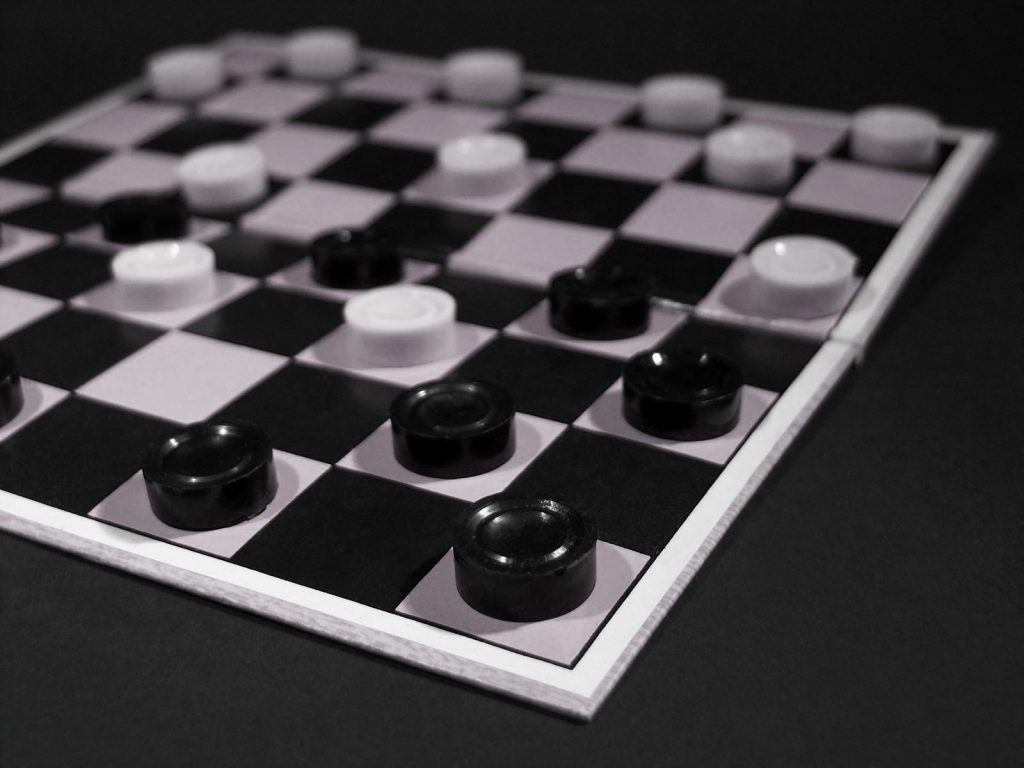(If you haven’t read the Introduction and are wondering what I mean by “symbols,” I recommend you read that first.)
Part 1: Surrogation
Because we deal in symbols every day, and the substances behind those symbols are often agreed upon by those around us, it’s not surprising that we sometimes forget that they’re symbols at all. There’s already a term for this, sort of. In the world of business, when a company single-mindedly focuses their efforts on a metric and forgets about the very thing that the metric was supposed to represent, this behavior is called surrogation.
An everyday example of surrogation is a manager tasked with increasing customer satisfaction who begins to believe that the customer satisfaction survey score actually is customer satisfaction.
Yet I find that we make this same kind of mistake in all areas of everyday life, so we’ll benefit from thinking about it more generally: Surrogation is the mistaking of symbols for their substance.
When a person seeks to acquire the symbols of a good thing, or reject the symbols of a bad thing, or describe symbols for some other purpose, instead of seeking to acquire or reject or describe the thing itself, they’re surrogating. Imagine a person placing a black paper circle on the checkers board and thinking he now has more pieces in the game. Imagine a person drawing a sideways triangle and expecting a video to play.

Easy examples
I’ll start with some really blatant real-world examples of surrogation:
-
An audience’s applause symbolizes approval and praise. A speaker values applause because it means their message was well received by the audience. But what if the speaker becomes too fixated on the symbol itself? What if they actually seek the applause directly? Is this reasonable? No, and it makes them look bad:
Is this approval and praise?
-
A photograph of people can be used to symbolize the demographic makeup of a larger group of people. A photo of racially or sexually diverse people implies that the larger group is racially or sexually diverse. Many organizations want to be seen as racially and sexually diverse. But there are easier ways to get a diverse photo.
The University of Wisconsin has the most famous example:
But there are many runners up:
- York College of Pennsylvania
- the American Petroleum Institute
- the city of Toronto
- Pennsylvania Governor Tom Corbett
Is this caring about diversity, or is it caring about the symbols of diversity?
-
To be named the “winner” of an athletic competition symbolizes a lot of things: supreme talent, hard work, motivation, game strategy. But there are easier ways to be named the winner:
Set aside the fact that the public found out about Lance Armstrong’s cheating and revoked his awards; suppose he got away with it. Did he feel like a superior athlete? Did he actually live that experience of knowing you have the best combination of talent, hard work, motivation, and strategy?
Closer to home
Most of us haven’t committed gaffes like the ones above. But don’t pat yourselves on the back just yet. This section is for people like you and me.
- A photo of people laughing or candidly smiling symbolizes a fun time. But it’s easier to fake a smile than hope for the perfect candid photo. Whenever Jane Popular-Girl goes out, she obsesses about getting the right photo. Long after the fun moment has passed, Jane is still doing retakes to get everything looking right; after that, she agonizes over what caption to write when she posts it on social media. Is this what a fun time feels like? And similarly: a high number of likes on social media symbolizes high social status. So Jane constantly checks her posts to see how she’s doing in the rat race of popularity. She even pesters her friends to like and share her posts. Is this what high social status feels like?
- A sports car symbolizes wealth. But it turns out a lot of Americans can find a way to buy a sports car if they really want to. Joe Middle-Class has always wanted to be wealthy, so when he’s presented with the opportunity to buy a sports car, he jumps on it. Then he finds himself stressing out every month as he cuts corners in his budget and lets some expenses slip into credit card debt, just so he can make his car payments. He also stresses every time he drives the car, because any ding or scratch would be intolerably costly fix. Is this what it feels like to be wealthy? And, to some degree, this applies to all conspicuous consumption by the middle class (but there are more complex reasons for it as well).
- Some physical traits are not only attractive, but symbolize attractiveness to some people. Johnny Single-Man thinks tall blonde women are the most attractive. They’re less common, after all, and they’re on the TV shows he likes. And when his friends talk about the women they’ve dated, they especially brag about the tall ones and the blonde ones. So when Johnny sees a woman with blonde hair and tall stature across the bar, he automatically shuffles over, talks to her, and hopes she’ll like him. And if she likes him, he’ll keep seeing her, and he’ll keep the relationship going as long as he can. But not once does he stop to notice how he actually feels when he looks at her / when he’s around her / when she talks to him. He’s chasing his symbols of attractiveness, but the actual feeling of attraction is nowhere on his radar.
- A salad symbolizes disciplined, healthy eating. But there are a lot of ways to make a salad. Mary Diet-Body likes to sprinkle her bowl with greens before piling it high with breaded chicken, shredded cheese, bacon bits, and three kinds of salad dressing. How could she still be gaining weight? She’s eating salads every day!
More examples, more examples!
Finally, here are some random examples I’ve come across:
- Data and metrics: I briefly mentioned this one at the beginning. You want to increase some abstract quality (like customers’ loyalty), so you measure a quantity that seems to represent it (like the number of products your average customer has). Then your actions end up increasing the metric without increasing the quality itself. Remember that the metric is only useful insofar as it represents the substance faithfully – Wells Fargo (Harvard Business Review)
- Drawing: If you do all of your drawing in terms of known shapes—an oval here, parallel lines there—your drawing will look bad. Don’t reduce your visual field to a set of symbols; instead draw what you see, with all its anomalies and complexity – How to Draw (The Last Psychiatrist)
- Niceguys: The Niceguy is an archetype in the modern dating world. This is a man who proudly displays the symbols of kindness—holding the door open, offering flattering words, pledging commitment—and thinks this makes him a kind person, despite the bitterness he actually feels toward women. Most people can see through this (and make fun of him on the internet), but he himself cannot – r/niceguys
- Pseudo-intellectuals: Complicated ideas sometimes require complicated language. So, complicated language tends to symbolize the speaker’s great intellect. But pseudo-intellectuals use unnecessarily complicated language to convey ordinary thoughts. In doing so, they mistakenly think they’re being very intellectual. They, too, get made fun of on the internet – r/iamverysmart
Enough for now
I hope these examples were enough to give you a sense of the general principle that ties them all together. I want you to be able to spot surrogation wherever it appears in your life, no matter what the particular situation is.
…And then what? Do we abandon the symbol and chase the substance instead? Is it that simple? No, but I’ll touch on that in the next post.
For now, I’ll leave you with a quick historical anecdote. I recently read Rubicon, a book about the end of the Roman Republic in the first century BC. The Romans had a peculiar culture. They were obsessed with social status, but they always frowned upon outward displays of wealth or pleasure. The highest government officers, the consuls, wore no crowns or fancy jewelry—only a differently-colored toga. Acclaimed military generals were expected to march in the mud and sleep on the ground with their troops. Successful businessmen were embarrassed to be seen too often in the luxurious villas they’d bought for their wives. And although there were certain families whose very names symbolized high class, that only meant that their children were expected to achieve even greater things (and were judged more harshly for living average lives). Meanwhile, Rome was going into battle against some very different nations to the south and east—kingdoms with golden palaces, with rulers who claimed to be gods, who were carried around by servants and wore shiny gilded armor into battle. Neither Rome nor any of these other nations lasted forever, but guess which one came closest to conquering the world.




Pingback: A world of symbols (Part 2): Responses to surrogation - Patrick D. FarleyPatrick D. Farley
For now i feel. Were guided through a scripted maze, the jobs available to us, leading us to achievements we don’t want, to some extent exercising achievements which provide a sense of existence (flow) would take humanity to the next step, beyond capitalism and redundant work. Feel free to revert back
Pingback: A world of symbols (Part 4): The need for symbols - Patrick D. FarleyPatrick D. Farley
Pingback: A world of symbols (Part 6): Degrees of understanding - Patrick D. FarleyPatrick D. Farley
Pingback: Plots and Plans - Patrick D. FarleyPatrick D. Farley
Pingback: A world of symbols: Introduction - Patrick D. Farley
Pingback: The present perfect tense is ruining your life - Patrick D. Farley